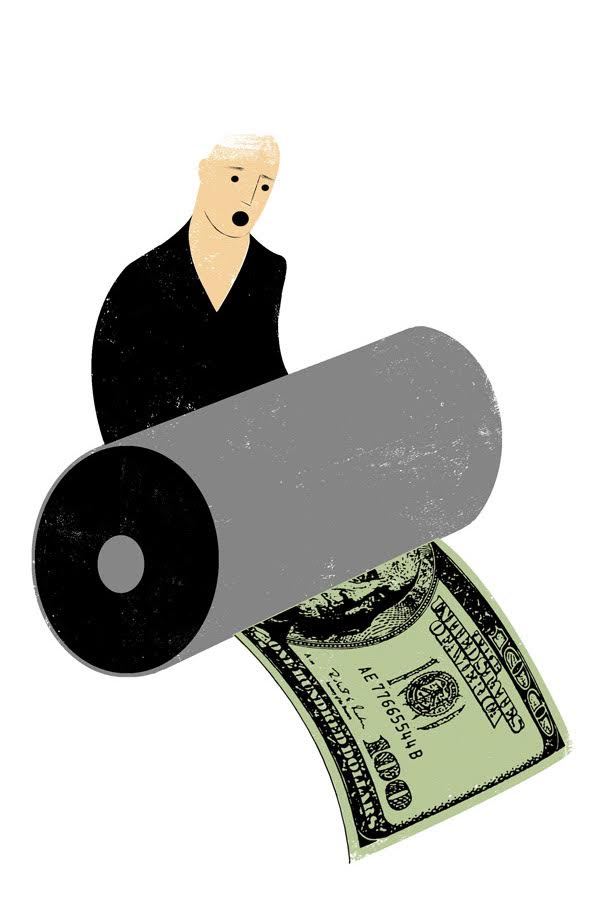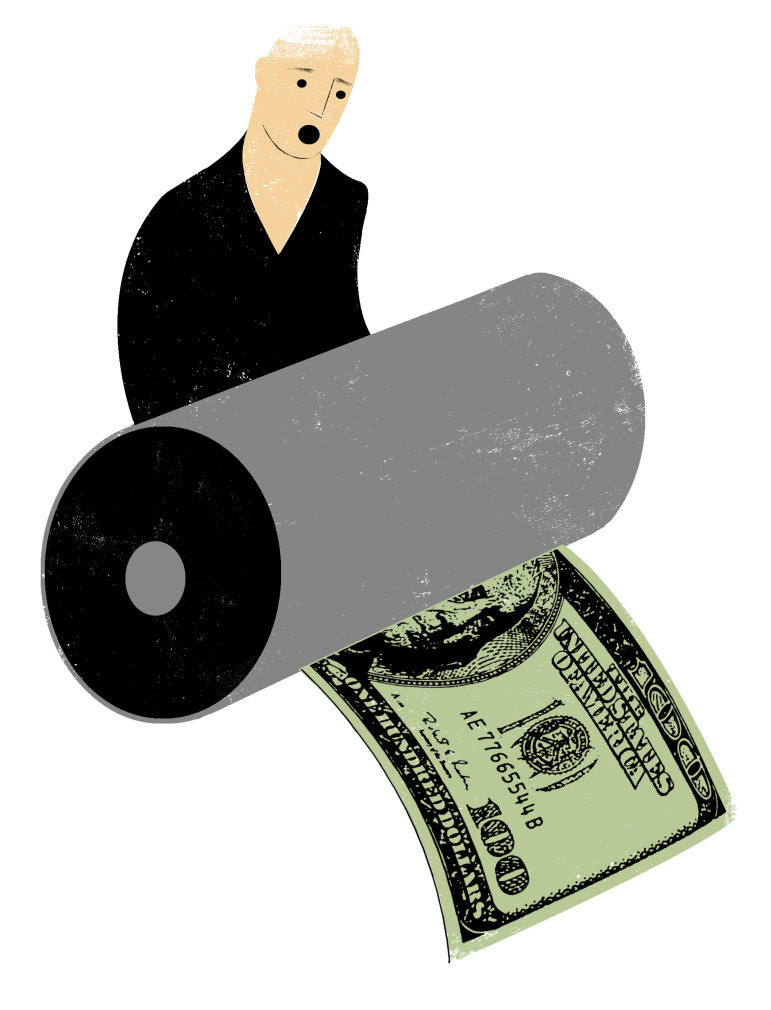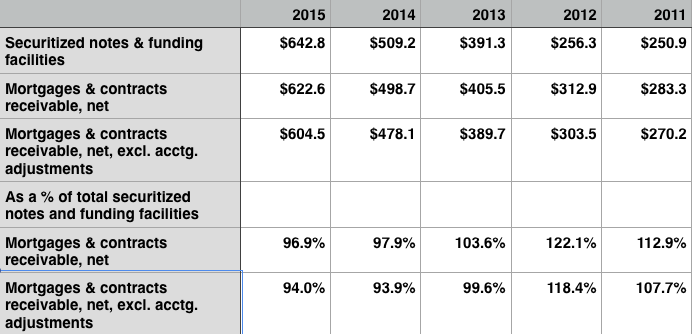Purchase, New York, is a woodsy, suburban hamlet on the Connecticut state line that’s known as much for its residents’ extraordinary wealth as it is for being the headquarters address for corporate heavyweights like MBIA, PepsiCo and MasterCard.
The town is also home to Quorum Federal Credit Union, a small member-owned and tax-free cooperative whose website suggests it’s still the type of plain vanilla alternative to big banks that it was set up to be 82 years ago, where profits reduce the cost of loans and boost the interest rate paid on savings accounts.
What can’t be easily seen, however, is the fact that Quorum has become a major lender to the vacation ownership interest business — that is, the new iteration of timeshare sales, the controversial, if long-standing, vacation concept. Loans made to customers of Diamond Resorts International are the biggest part of this portfolio and it’s no embellishment to say that without Quorum, Diamond wouldn’t be where it is today.
(Southern Investigative Reporting Foundation Readers will recall its March investigation into Diamond’s financial filings, revealing a picture that’s entirely at odds with the growth juggernaut that management touts. A January New York Times investigation discussed allegations of high-pressure or misleading sales practices at several Diamond resorts.)
Access to the Quorum lending facility is a key component of Diamond’s business model — the credit union funds loans that are eventually securitized, providing the cash it needs to keep its operations going and to maintain its investment-grade credit rating. To that end, Diamond’s annual report disclosed it extended the lending agreement into 2017 and the loan facility raised to $100 million.
This is not the most favorable moment for a VOI marketer to be looking for replacement financing. Loans are showing mounting delinquencies and more broadly, the industry is coming under renewed regulatory scrutiny. (To that end, in its recently filed proxy, Diamond disclosed that its board of directors has formed a “strategic risk” committee to assist the board in its “oversight of the business, affairs and management of the Company.”)
One former Quorum official told the Southern Investigative Reporting Foundation that with respect to its relationship with Diamond — circa 2014 through early 2015 — their impression was that Diamond sent its “riskier seeming” loans to the credit union. During certain periods of the year, up to 1,000 VOI loan applications per day would come to Quorum “with easily half from Diamond,” they said.
(Diamond has usually been about 30 percent to 37 percent of Quorum’s VOI portfolio, according to its annual reports, but in 2015 fell to 27 percent.)
Additionally, this official recalled many of these loan applicants having FICO scores under 660, a key criteria in determining whether a borrower is classified subprime. They said “most” of these loans were approved as Quorum sought to grow its membership.
Membership is a key concept in keeping a credit union vigorous because unlike a bank, it can’t issue shares or debt, nor have ancillary units like investment management or securities trading.
For Quorum, growing membership — and the assets members bring in the form of checking and savings account balances — was the reason they struck a deal with Diamond in early 2010 in the first place, according to the former Quorum official. Take a look at Quorum’s 2009 call report to see why: a loss of $1.1 million, declines in membership and assets, and a spike in loan delinquencies.
The deal provided up to $40 million worth of loans for Diamond and in return the borrowers would become members of Quorum. But joining a credit union requires people to have a common professional or vocational bond, like working at a specific employer or in a certain industry. Quorum threaded this needle by having borrowers sign a document that made them a member of the American Consumer Council, a consumer advocacy group with an “affiliate relationship” with Quorum. After the VOI borrower is a member, per the Diamond contract, Quorum would seek to market other types of loans to them.
For every loan application Quorum approved, according to the former Quorum official cited above, Diamond purportedly deposited $25 in the borrower’s savings account.
American Consumer Council president Tom Hinton, in an email comment about the use of his group’s affiliate relationship as the first step in a VOI loan process, said, “I appreciate you bringing the matter of time share loans to my attention. While ACC does not make consumer loans, if consumers are being manipulated or abused financially, we are very concerned. Let me investigate this matter further and be in contact with you shortly.”
At the center of Quorum’s VOI loan strategy is the Vacation Ownership Funding Company LLC, or VOFCO, an entity 79 percent owned by Quorum and 21 percent by its president and founder, Todd Fasanella. Known as a credit union service organization, or CUSO, VOFCO consults with Quorum on VOI loan sourcing and portfolio management, although being more specific than that is difficult because after being prominently mentioned in the front of recent annual reports, it’s not referenced again.
Whatever VOFCO does, it does well, at least in the eyes of Quorum’s president and chief executive officer, Bruno Sementilli. When the NCUA floated a proposal to expand CUSO disclosures in August 2011, he felt strongly enough to pen a bluntly worded letter in opposition. Referencing VOFCO, he wrote, “in less than two short years, we estimate our credit union has earned over $4 million dollars in loan interest and generated $60 million in member deposits.”
He added that VOFCO is “an innovative enterprise, borne out of the ashes of the credit crunch, [that] required non-disclosure agreements from many parties.”
Tracking VOFCO’s contribution to Quorum’s bottom line is difficult since the credit union stopped breaking out its performance in the second quarter of 2011. The last call report with VOFCO’s earnings was the end of the first quarter in March 2011 and it showed a loss of $283,000, an improvement over the prior quarter, the end of the fourth quarter in December 2010, which disclosed a loss of $1.5 million. The most recent call report only noted that Quorum had loaned VOFCO and its four other CUSOs a total of $1.9 million; other documents appeared to suggest that much of this total was to VOFCO.
VOFCO’s chief executive Todd Fasanella is also a full-time investment banker at Beverly Hills-based brokerage Imperial Capital. It’s an unusual arrangement for Wall Street circa 2016: he works at Imperial advising or trying to drum up business from VOI industry clients and then turns around and manages a $158 million portfolio of their loans for someone else.
Multiple attempts to contact both Imperial’s general counsel and president to discuss Fasanella’s two jobs were unsuccessful.
In a prior job as an asset-backed securities banker at Credit Suisse, one of Fasanella’s key clients, National Century Financial Enterprises, perpetrated a massive fraud. Briefly, NCFE’s senior managers inflated the amount of receivables NCFE had purchased from medical practices and then, using the proceeds from securitizations of the bogus receivables, sent payment “advances” to health care providers they owned undisclosed stakes in.
When the scam unwound in the autumn of 2002, Dublin, Ohio-based NCFE was accused of collecting $2.5 billion from two dozen institutional investors; when the bonds were revealed to be nearly worthless, the losses spread to several brokerages, including Credit Suisse. Two of the company’s senior executives were sentenced to 25- and 30-year jail terms and another four executives were convicted.
While no regulator or client accused Fasanella or his Credit Suisse colleagues of perpetrating or aiding the scam, a U.S. District Court judge had some sharp words about what they saw and said about NCFE internally.
In a 2012 opinion denying Credit Suisse’s motion for summary judgment on the NCFE bondholder’s claims, Judge James Graham of the Southern District of Ohio, cited emails and depositions from Fasanella and three Credit Suisse ABS unit colleagues as evidence of their possibly “having knowledge of the fraud.” He also wrote that there was evidence that Fasanella, at varying points, may have been aware of a series of NCFE’s problematic business practices, including “using reserve funds to buy receivables” and management’s attempt to manipulate (downward) the receivables default rate.
Credit Suisse settled the NCFE noteholder claims in May 2013 for $400 million.
Reached on his mobile phone, Fasanella sole comment before hanging up was “I don’t speak to reporters.”
————————
Diamond has a good thing going with Quorum: They get access to ample credit, especially for those applicants with weaker credit profiles. From a Diamond investor’s perspective, it would be a shame if anything changed.
This week Quorum posted its first-quarter call report, and it’s safe to say that change is in the offing after it disclosed $6.8 million in bad loan charges that led to a loss of $2.99 million.
The post-credit-crisis strategy of focusing on esoteric lending opportunities like VOI (as well as taxi medallions, hearing aids and fertility treatments) to generate revenues and membership has run into both a broader slowdown in the consumer credit cycle as well as more specific problems, like an increasingly worried regulator.
Since 2014 Quorum’s regulators at the National Credit Union Association have been scrutinizing its VOI loan portfolio. They are weighing (among other measures) ordering the credit union to sell up to $110.7 million worth of VOI loans that it’s holding in a held-for-sale account.
According to Quorum’s 2015 annual report, another $47.9 million of VOI loans are held in the consumer loan receivable account. All told, the credit union has a total of $158.6 million worth of these loans, making up 22.6 percent of the $701 million loan portfolio.
Almost 14 percent of the VOI loans were in arrears last year — in 2014 it was 12.6 percent — and Quorum says it hasn’t reserved for prospective losses given its “credit enhancement feature,” or the discount between the loan’s full value and the price it pays for the loan, which last year was between 80 percent to 90 percent of full value.
If the NCUA ordered Quorum to sell the VOIA held-for-sale block, it’s difficult to imagine the loans fetching a price the credit union would be happy about because there is no secondary market for this type of asset, so any bid would likely be below the value that they are carried on Quroum’s books, diminishing equity.
Keith Leggett, a retired American Bankers Association senior economist, has written about Quorum and VOI loans repeatedly on his weblog, Credit Union Watch. Asked about the likelihood of the NCUA forcing the credit union to sell the loans, he said, “I would have thought it was a low probability outcome, but [the NCUA] is clearly reconsidering their approach to the loans based on the annual report’s language.”
He did add, “If [Quorum] was forced to do so it wouldn’t be like a margin call from a broker; they would almost certainly be given a good amount of time to work out a solution.”
(A brief disclosure: Leggett worked for the Washington-based ABA, the banking industry’s primary trade and lobbying group, whose membership is a daily competitor of credit unions for consumer deposits. Moreover, its leadership has recently sought to end tax exemption for credit unions. Going back decades, the ABA and credit unions have disputed a host of financial regulations.)
One headache that Quorum won’t be able to navigate around is the $76 million taxi medallion loan portfolio. Though not explicitly referenced in the first-quarter call report, the loan charge-offs are almost certainly coming from here.
As the popularity of cab alternatives Uber and Lyft continues to skyrocket, taxi industry revenues have plummeted. Correspondingly, medallion prices have currently fallen to around $500,000 from under $1.1 million in 2013.
Morgan Stanley’s equity analysts, in a March 31 research report on Signature Bank, estimated that a baseline default scenario for taxi medallion loan portfolios is 25 percent, with a worst-case scenario of 50 percent (playing out over four years).
What’s this mean for Diamond? Quorum’s management may want to continue lending heavily to the VOI industry, but equity write-downs from medallion losses might force regulators to curtail activity.
A credit union is considered “well capitalized” if the ratio of its net worth to total assets is 7 percent or better; Quorum’s ratio is 7.3 percent this quarter. If the Morgan Stanley baseline scenario comes to pass, and total assets don’t grow appreciably, that ratio would drop to 5.1 percent, making Quorum “undercapitalized.”
————————
Over the course of five weeks’ worth of reporting, numerous phone and email attempts were made to contact Quorum Federal Credit Union’s management, especially its president and CEO, Bruno Sementilli, and this included trying his home and mobile phone numbers.
Similarly, attempts to obtain a comment from Vacation Ownership Funding Company’s chief investment officer, Greg Cooper, failed.
After being asked about its relationship with Quorum Federal Credit Union, Diamond Resorts provided these answers.





